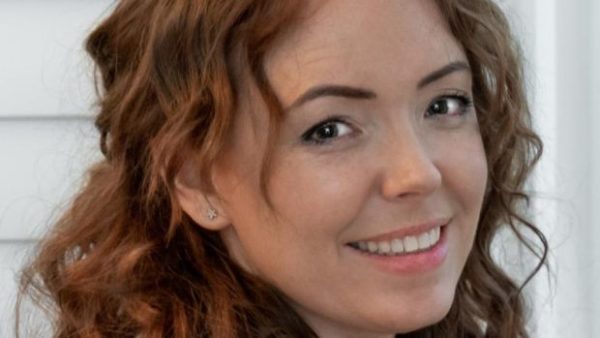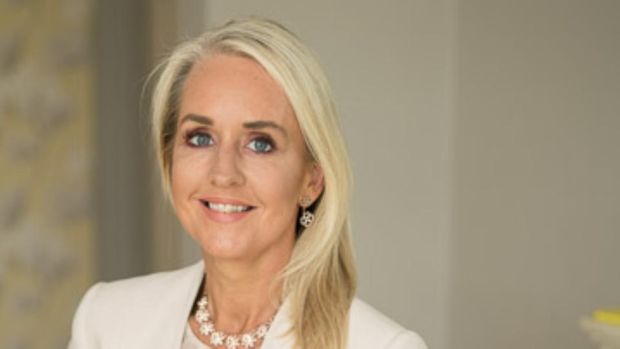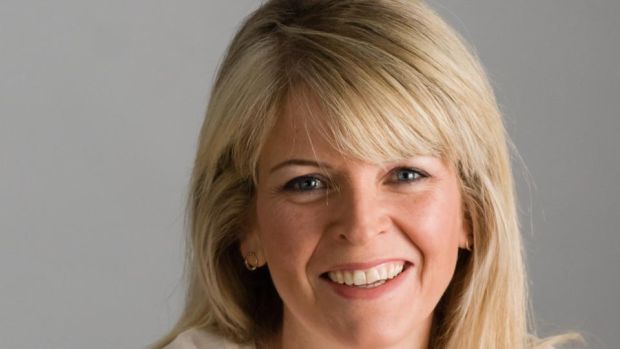
Night-time waking and severe asleep deprivation are unavoidable for new parents but for how long should that last and what can be done if it seems to be continuing indefinitely?
Those are questions more parents are daring to ask out loud and, it seems, are willing to pay to have answered – judging by the growth of paediatric sleep consultants in Ireland over the past decade. Where once parents may have suffered in silence, or muddled through with family support, the more isolated and pressurised, dual-earning nature of modern family life means looking for professional help has become a necessity for some.
“It is not about being a selfish parent if you want your child to sleep, as that is often how it is perceived,” says Lucy Wolfe of Sleep Matters. “A well-rested child is a precursor to a well-rested family unit – with huge benefits,” she stresses. “If we are going to prioritise maternal health and wellbeing and also infant mental health, sleep has to be part of that conversation.”
As a parent of three young children, including three-year-old twins, sleep coach Ursula Quinn believes there is not a lot of help out there when it comes to babies’ sleep. Too often women tell her that they have raised the issue of their baby’s poor sleep with a doctor only to be told that it is “normal” or “to be expected” when in reality, she says, “there is a great deal that could be done and should be done to ensure that everyone sleeps better”.
Wolfe, author of The Baby Sleep Solution, says that in client consultations she is usually “not telling them things they don’t already know but what is most important is the support and the validation”.
Niamh O’Reilly of The Nursery and author of No Fuss Baby and Toddler Sleep”, echoes the importance of affirmation. “It’s difficult when you are in the middle of a storm to see clearly,” she says. “I am able to be objective; I look at the big picture and each set of families’ circumstances – creating a work/life/sleep structure and re-establishing lost confidences.”
Hiring a sleep consultant has become more socially acceptable in Ireland, observes Kelly Geoghegan of Sleepy Stars, a former maternity nurse and garda, who has worked internationally as a paediatric sleep consultant.
“Most parents who contact me for assistance have reached out in a state of desperation” – after trying to follow tips from books, the internet, family and friends. “Sometimes tiredness can be blinding and parents can’t see the obvious changes that need to be made.”
It should never be underestimated how parents’ state of mind and mental health influence the baby’s sleep and vice-versa, says Magda Kedzierska-Teague of Sleep Story.
“If you’re stressed, anxious and unwell, the baby will tune into it.” Parents, especially mums, she adds, should not be afraid to talk about post-natal depression or feel ashamed to look for help.
Here these five sleep consultants share a little of their advice on six common questions:
What sort of sleep routine can be expected in babies of under six months?
Regular waking in the first few months is nature’s way of keeping the baby alive, as Cork-based Wolfe points out, so parents should have very low expectations of sleep and concentrate on building the trust bond. “Go with the flow,” says O’Reilly who lives in Dublin. “You need the early weeks and months to simply get to know each other.”
As Galway-based Quinn explains: “Most sleep consultants will only work proactively on sleep after the age of six months, so that they can be sure that the baby has developed mature sleep cycles and the capability to sleep for longer periods.”
However, that doesn’t mean parents can’t take some steps towards what Wolfe, describes as “sleep shaping”. These include getting to know how to read the early sleep cues, such as brief eye rub, brief yawn or a “dreamy look” in the eyes.
She also stresses that if parents understand that babies come out of the womb with “a high need to be held”, this can make a huge difference, “otherwise parents think if they hold them now, they will be holding them for 18 years. Rock them, roll them, swing them, sling them, there is no such thing as bad habits – it’s all about getting through these first few months and laying a foundation as you do.”
She does recommend, at between eight and 12 weeks, taking “a percentage of wakefulness approach”. This is moving from putting the baby down when 100 per cent asleep after a feed, to being increasingly aware they are being put down, which she describes as “unlocking sleep ability”.

O’Reilly also reassures parents that there is little that they do in this early phase that can’t be adjusted or “fixed” after six months. But she does advise: “Use darkness to your advantage” wherever the baby is expected to sleep.
With a baby instinctively wanting to be near or on you, Quinn says your best chances of getting them down in their sleeping space is to create a “womb-like” environment, eg by swaddling and using a hot-water bottle to warm the sheets – but do take it out before you lie the baby down.
She also explains that a younger baby’s natural bedtime will be similar to the mother’s and he/she may stay awake for a longer period in the evening, perhaps wanting to feed almost constantly during this time.
“Go with your baby on this, they are stocking up for a longer period of sleep at the first part of the night and it is a good idea to go to bed when they do, as the first stretch of the night is often the longest.”
Closer to four and five months of age, she adds, “your baby’s natural bedtime will get earlier and move towards somewhere between 7 and 8pm”.
What are the pros and cons of co-sleeping?
“Co-sleeping” is generally taken to mean sharing your bed with the baby, but as Geoghegan points out, the term also applies to using a side crib (where a small cot attaches to the side of the parents’ bed) or sharing a room, with the Moses basket or cot in the same room as the parents. However, while the recommends keeping the baby’s cot in your bedroom for at least the first six months, it warns about the dangers of a baby sharing the parents’ bed, as it can increase the risk of suffocation.
In extensive sleep advice on mychild.ie (and in the “Mychild 0-2 years” book given out by public health nurse), it explicitly says parents should not bedshare if the baby is under three months, was born prematurely (before 37 weeks) or had a low birth weight (less than 2.5kg), or if you or your partner are smokers, have consumed alcohol or other drugs, or are “over-tired”.

Co-sleeping in the same bed is something of a contentious issue, acknowledges Quinn, yet studies show that up to 70 per cent of parents do it at some point.
“The advises strongly against it because of incidences of infant mortality due to suffocation, yet there are well-regarded parenting books which strongly advocate it as a natural and normal way for babies to sleep,” she says. “I believe that it is a parenting choice. I don’t advise parents to do it but I do not judge either if this is something that they have decided to do.”
O’Reilly thinks sometimes parents do feel judged for co-sleeping. However, “it can be a very effective way for a family to get sleep,” she says, “I would always advise people to make an informed decision. Make yourself aware of the safe co-sleeping guidelines.”
However, Quinn says that she most commonly works with parents who have found themselves to be “accidental” co-sleepers and are hoping to move their baby to their own sleep space but are not quite sure how to do it.
Geoghegan warns that the older a child is when the parents are ready to stop co-sleeping, the more stressful it can be for the baby/toddler. Parents who have decided the child should be out of their bed by a certain age should first, she suggests, put them in the nursery for daytime naps, to get them used to sleeping in their own room.
What are the essential elements of a good bedtime routine?
“It doesn’t have to be a big convoluted process,” says O’Reilly “The idea is that, in time, little ones know that it’s bedtime – no matter who is putting them to bed; no matter when you’re expecting them to sleep (daytime naps or bedtime); and also, no matter where, whether at home or in granny’s house. Bedtime is bedtime – end of story.”
The consultants all agree that whatever the routine is, it should be started before the child is too tired. Wolfe believes that babies aged four to eight months generally do well if there is no more than two hours between the last nap and aiming to be in bed asleep. That grows to a three- to four-hour gap by 18 months.
“It is the biological time-keeping that underpins and supports good sleep practices,” she says. But this needs to be backed up by bedtime routine and that should happen in the room the child is going to sleep in.

For Wolfe, consistency and lots of parent-child connection are key aspects “as you are getting them ready for the big separation”. She stresses that “the more work the child does for themselves in achieving their sleep, the more chance they have of getting through the night-time sleep phases without parental input”.
For Quinn, the most important element of a good bedtime routine is that it happens at the same time every night. “Babies rely on following our cues and signals to know what is happening and what to expect,” she continues. “By establishing a strong bedtime routine, babies know that sleep is coming and their bodies begin to relax and wind down. Any feeds should happen at least 30 minutes before bedtime.”
Geoghegan also stresses the importance of the routine all taking place in the bedroom rather than, say, changing a child into their PJs in the living room.
Kedzierska-Teague, who live in Donabate, Co Dublin, says a successful, consistent bedtime routine resists the passing of time, with “breast/bottle (and eventually dinner), bath, book, bed” being the gold standard as far as she is concerned. (But others say don’t worry about skipping the bath bit if it’s not practical for your family.)
How much crying, if any, should sleep training involve?
None of these consultants advocates “cry it out” but that doesn’t mean there won’t be tears.
“I would love if there was no crying but we know as children transition and you make changes, it is their primary mode of communication,” says Wolfe. But protest crying is discernibly different to distressed crying and she always allows for picking up.
She recommends a “stay and support” approach that enables a parent to be there “emotionally, physically, verbally” for the child. As the sleep ability improves, parents can pull back but “never do what doesn’t feel right for you”, she adds.
Parents should not leave their child to cry for prolonged periods, says Geoghegan. However, it’s fine to give your baby a brief chance to cry and resettle before attending to them.

“If you see your baby on the baby monitor and their eyes are still closed and their cry is more of a whinge it’s okay to give them a little time to see if they can resettle.”
O’Reilly says tears during sleep training are often more to do with resistance to change and frustration that mum or dad isn’t doing whatever it is that they used to do eg rocking, car journeys, buggy etc. “I do not use ‘cry it out’ methods nor do I suggest timed intervals when responding to them,” she explains. Rather she focuses on really listening and asking yourself: Are they sad? Do they need me? Are they giving out?
“Little ones who are upset should not be alone at any stage and so, in terms of how long should your baby cry, the answer is minimal,” she adds.
What can you do with a child’s bedroom to increase chances of better sleep?
Black-out blinds are highly recommended. As for artificial lighting, Geoghegan advises on using a lamp with a low-wattage light bulb at bedtime.
“If the ceiling light with a high-wattage bulb is on during the bedtime routine, it can be very extreme for a young child to go from a very bright room to complete darkness when the parent leaves the room.”
She doesn’t encourage the constant use of a night light for babies or young children. “I only recommend the use of a night light when a toddler is ready to be potty trained at night. A source of light in the bedroom can contribute to frequent nightly wake-ups.”
Soothing white noise is a good option, says Kedzierska-Teague, “especially when you live in a busy place, or simply don’t want to tip-toe around your house when the kids are in bed”. If you do play music or white noise while your child is going to sleep it must stay on for the whole night, says Wolfe. “Otherwise the brain will search for it, as it will always search out the conditions under which it has gone to sleep.”
She recommends parents spend non-sleep time with their child in the bedroom, to reinforce the idea that it is a nice place to be. And in making the transition from co-sleeping to cot, introduce playtime in the cot, she suggests. While that might seem counter-intuitive, she believes it supports “a positive association”.
However, O’Reilly says that if at all possible, a bedroom should be a place to sleep. “Keeping it free of too many toys or ‘things to do’ will create a sanctuary and peaceful space for babies and older kids.”
Kedzierska-Teague says the importance of making sure the bedroom is tidy is often overlooked. “The clutter can be really stimulating.”
Are there ground rules for daytime napping?
In the early months, parents “waste a lot of energy worrying about something that is not yet biologically developed”, says Wolfe. But from six months onwards, while the amount of sleep is important, she prefers to focus on what happens between the naps because “if we have the dynamic right, the body will respond in kind”.
She also says “some naps are better than no naps” – so if child will only sleep in the buggy or car, go with that and you can work on other elements later.
Geoghegan suggests that parents should be aware of nap guidelines for their baby’s age “but don’t fixate on them, some babies need more or less than others”. She also believes that while consistent naps time is important, parents shouldn’t feel like they have to be home every day for them.
Know the times that your baby naps and try to plan your outings to accommodate these, she suggests. “Baby can nap lying flat in the buggy in a busy coffee shop or out for a walk. If your baby only naps in a quiet dark room then he/she will have difficultly ‘napping out’ or in a bright noisy creche as they grow older.”
A common misconception among parents is that if they just shorten or stop naps, then their baby will sleep more soundly at night.
However, as Quinn reiterates: “An overtired baby will not sleep well and this approach generally backfires badly. Sleep begets sleep; a well-rested baby will rest well.”